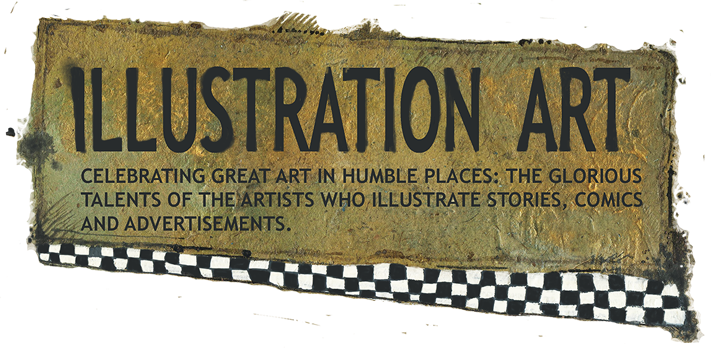"Mistah Kurtz, he dead"
Like Andy Warhol and LeRoy Neiman, Peter Max was a talented, hard working illustrator before he became a pop culture sensation. He studied for years with the great teacher Frank Reilly at the Art Students League in New York and learned the skills of a serious artist.
In 1963, Max was assigned to paint a jazz record cover. The young artist worked hard to finish the project on time, but his art director didn't like the result. Max begged for a one day extension and started over with a totally different approach.
He dug deeper, stayed up most of the night, and produced the following cover which won a gold medal from the Society of Illustrators for the best advertising art of 1963:
One look at this lovely picture tells you that Max had what it takes. Note how the highest contrast and the sharpest focused lines are right on that piano keyboard where he wants to direct your attention. Beautiful.
Then a few years later, Max hit the jackpot with his "Cosmic" art style, which became wildly successful in the 1960s. His trademark psychedelic look soon adorned everything from perfume bottles to airplanes. Max sold millions of posters and limited edition prints and became wealthy.
Max soon enjoyed the celebrity lifestyle. His personal chauffer drove him around Manhattan in Max's custom designed Rolls Royce. He painted Ringo Starr's piano and performed painting demonstrations on the white house lawn. He was featured on the cover of Life Magazine.
Max now had complete artistic freedom. No more deadlines, no more unreasonable client demands, no more unappreciative art directors. He could just look within his heart and paint whatever he found there. His fan base would buy anything with his signature on it. He began making his signature bigger and bigger.
The funny thing is, as his signature got bigger, his talent got smaller:
The artist who started out as a sharp minded and keen eyed competitor became artistically flabby. Here is his crummy painting entitled "I love the World," depicting an angel embracing the planet.
Without the benefit of anyone to challenge or reject his work, Max sank deeper and deeper into a morass of narcissism. Here are some official quotes about Max offered by his web site:
He loves to hear amazing facts about the universe
Peter's early childhood impressions had a profound influence on his psyche, weaving the fabric that was to become the tapestry of his full creative expression.
This new style developed as a spontaneous creative urge, following Max's meeting with Swami Satchidananda, an Indian Yoga master who taught him meditation and the spiritual teachings of the East.
In the 1970s, Max gave up his commercial pursuits and went into retreat to begin painting in earnest....
[I]n October, 1989, Max unveiled his "40 Gorbys," a colorful homage to Mikhail Gorbachev. Prophetically, a few weeks later, communism fell in Eastern Europe....
Max could be forgiven for his nutty philosophy, but when he gained the freedom to say or do anything, his art clearly suffered.
In my view, Peter Max, along with Andy Warhol and Leroy Neiman, are good examples of artists whose work was spoiled and made rotten by excessive freedom. Today's fine art scene offers many additional examples of artists whose self-indulgent work has little relevance or value outside their own cloistered circle. When the world provides resistance to an artist (whether in the form of a deadline, or a client's specifications, or poverty, or totalitarian censorship) it can have a beneficial effect on the art. As the old proverb says, "the wind in a man's face makes him wise."
Artistic freedom can help or hurt art. But if great art can be produced in a prison cell or a concentration camp, it's silly for the fine art community to suggest that it can't also be produced within the constraints of a commercial art studio.
























































